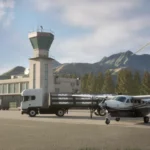Writing for FINN, Joshua Ng, director at Alton Aviation Consultancy, explores the backdrop to the Singapore Airshow and how technological innovations are laying the foundations for the future.
With air travel demand in the Asia Pacific (APAC) expected to finally surpass pre-COVID levels in 2024, this year’s Singapore Airshow is set against a backdrop of optimism, with the conversation dominated by opportunities in India and China, the risks faced by a post-COVID industry, and the promise of technological innovations.
India and China: Twin engines of growth in Asia
India is fast becoming an important aviation market, having overtaken China to become the world’s most populous country in 2023. The Indian public’s price sensitivity presents opportunities for low-cost carriers, while an increasing involvement of the private sector in a previously state-led industry brings additional expertise and financing to airline ventures and infrastructure developments.
China remains the largest air traffic market in the region, but a slowdown of the economy and foreign investment is expected to dampen growth. On the bright side, opportunities are emerging in the domestic aerospace and MRO industry. The Singapore Airshow will see the debut of COMAC’s C919 and ARJ21 at an international airshow, and the Chinese manufacturer could capitalise on the supply chain issues and backlogs of Airbus and Boeing to boost its own order book.
Managing headwinds
While APAC airlines are expected to return to profitability in 2024, they continue to face near term risks such as elevated and volatile fuel prices, taxes on carbon emissions, persistently high lending rates, and continued labour shortages.
Manufacturers are feeling the pressure as well, with the absence of Boeing commercial aircraft at the Airshow likely to raise eyebrows, particularly in the aftermath of the 737 MAX 9 groundings. While Boeing’s recent challenges do not significantly affect APAC airlines, the manufacturer’s safety concerns and supply chain issues will likely delay future deliveries, which—coupled with high aircraft lease rates—could force APAC airlines to reevaluate their fleet plans.
Technological innovations lay foundations for the future
Advanced Air Mobility (AAM) will be at the centre of attention at the Singapore Airshow, with Type Certificates beginning to be issued and commercialisation close on the horizon. This year’s Airshow will feature the AAM AeroForum, with C-suite executives coming together to discuss the near-term challenges towards commercialisation and entry-into-service, as well as the longer-term prospects of the industry as it matures.
Sustainability would continue to be a focus for the industry, with decarbonisation technologies in the spotlight as the sector works toward its 2050 net zero emissions target. Rising labour costs and increased competition have also prompted airports and airlines to turn to automation, such as the launch of e-security gates at Hong Kong International Airport, as well as plans to allow travellers to clear departure immigration without passports in Singapore.
Artificial intelligence is also on the agenda, with potential use cases ranging from disruption management and communication to enhancing revenue management systems. In all, the 2024 Singapore Airshow would mark a return to form for aviation in the region, which sees a few risks on the horizon but much cause for optimism.
Alton has published a more in-depth whitepaper on the same topic, entitled Asia Pacific’s Flight Path: Seizing Opportunities in an Evolving Landscape. The full report is accessible here.
Subscribe to the FINN weekly newsletter

